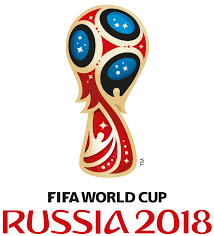The issue currently facing collegiate sports is not whether the coronavirus is going to have an impact on revenue to fund athletics. It is a given that revenue is going to take a hit. Uncertainty exists in regard to how much of a hit, for how long, and how best to address it. The specific answers to those questions will vary among colleges.
The Dilemma – Difficult Choices Have To Be Made
 There is an old adage that "cash is king." That translates in terms of college athletic programs to "football is king" because football is the predominant revenue generator for college sports. There is a lot of uncertainty right now regarding the impact the coronavirus will have on the 2020 college footbal season. Predictions range from a season as usual to no season at all. Chances are it's likely to be somewhere in betweeen with the format ultimatley determined by what is best for player safety.
There is an old adage that "cash is king." That translates in terms of college athletic programs to "football is king" because football is the predominant revenue generator for college sports. There is a lot of uncertainty right now regarding the impact the coronavirus will have on the 2020 college footbal season. Predictions range from a season as usual to no season at all. Chances are it's likely to be somewhere in betweeen with the format ultimatley determined by what is best for player safety.
From a financial standpoint, a college season without football will have implications for all sports. It also will have an impact on the many businesses in college towns like hotels, restaurants and retail stores etc. that get a huge bump in business during home football weekends.
It doesn't take a deep thinker to conclude that one possible option to address the potential decline in revenue is to eliminate non-revenue generating sports. That places men's and less likely but possibly women's soccer programs among others in the crosshairs.
It is difficult to get a grip on the ripple or downstream effect of the coronavirus but our awareness and acceptance of the possible downstream challenges has increased with each passing week. The coronavirus will eventually be in the rearview mirror. We will get throught this but in the meantime there is a very real sense of urgency in regard to the likelyhood of lost revenue.
Those in positions of authority with the responsibility of making very tough decisions are faced with a difficult task made even more challenging by the uncertainties that exist. Like all tough decisions it is not so much what must be done but how to do it.
The Nuclear Option
 We don't pretend to know all the potential options but hope that the decision makers pursue other solutions rather than rushing to the nuclear option of dissolving programs like college soccer that have been in existence for many years. That option in our view is the equivalent of throwing the baby out with the bath water.
We don't pretend to know all the potential options but hope that the decision makers pursue other solutions rather than rushing to the nuclear option of dissolving programs like college soccer that have been in existence for many years. That option in our view is the equivalent of throwing the baby out with the bath water.
It is a given that eliminating non-revenue generating programs is a simple solution. Simple solutions are sometimes great but not if there is a rush to judgement that treats a complex issue, like the problems that currently exist, as if the solution is simpler than it is.
Player Development

On another different but somewhat related issue, U.S. Soccer recently announced that they were ending the operation of the U.S. Development Academy. The Development Academy was formed in 2007 as a platform to enhance competitive youth play and the development of elite soccer players. It included youth academies and youth clubs from various organizations, including Major League Soccer, across five different age groups.
This announcement generated dialogue from various quarters regarding the development of soccer talent in this country and fanned the fire of the those who tend to devalue college soccer on the grounds that it does not prepare players for the MLS or World Cup play.
In our opinion, that viewpoint reflects tunnel vision. For starters, it is not accurate. It does not acknowledge the many college players that have gone on to play in the MLS and on the U.S. National Team who benefited from playing college soccer. It also discounts the high level of college coaches in this country in both major and mid-major programs and their on-going efforts to restructure college soccer to maximize player development. Last but not least, it reflects a lack of understanding and appreciation for the role that college soccer plays in the growth and interest in soccer in the United States.
It is accurate that some elite players do elect to forgo college to enter the professional ranks. Of course, there is merit for the existence of alternative approaches and pathways for some of the individuals who seek to play professionally. The existence of alternative approaches is not the point. Alternative pathways to the professional ranks exist in college soccer as well as college basketball, football and other sports. Basketball mandates at least a year of college athletics before entering the professional ranks but that is not the case for college soccer.
The development of robust youth soccer programs that enhance the competitive play of the youth in this country is a good thing. It is a plus that more young players in the United States who desire to play professional soccer are developing the skills needed to play professionally. A certain percentage of players will inherently elect to forgo college to enter the professional ranks in this country or abroad or enter the professional ranks after a season or two in college. The fact that occurs does not diminish the value of college soccer and the significant role of it.
The World Cup – What Happened in 2018?
 It would be naive to underestimate the impact that the level of success that the United States has in World Cup play has on soccer within this country. For evidence of that you need look no further than the resurgence and increased interest in soccer that resulted in 2002 when the United States made it to the quarterfinals.
It would be naive to underestimate the impact that the level of success that the United States has in World Cup play has on soccer within this country. For evidence of that you need look no further than the resurgence and increased interest in soccer that resulted in 2002 when the United States made it to the quarterfinals.
Some view the World Cup as the sole measure of the health of soccer in a country. When the United States didn't qualify for the World Cup in 2018 questions naturally and appropriately arose regarding player development in this country. It was a disappointing turn of events for any soccer fan in this country. We all want the United States to be more competitive in World Cup play.
Some were quick to place the blame of player development on college soccer. That viewpoint again reflected tunnel vision and treated a complex problem as if the solution was simpler than it is. For those who remember, similar concern and dialogue existed back in 1988 when the United State's men's basketball team didn't win the gold medal in the Olympics in Seoul, Korea. That was the last year in which NBA players were not allowed to participate on the Olympic basketball team and lead to the "Dream Team" in the 1992 Olympics in Barcelona that defeated its opponents by an average of forty-four point in route to claiming the gold medal. That team included the likes of Michael Jordan, Magic Johnson, Larry Bird, and David Robinson and included only one college player. .
While the United States is ahead of others in regard to football, basketball and baseball that is not the case in soccer where the rest of the world has been developing men's soccer for centuries. Progress has occurred over the past twenty years but the bottom line is that men's soccer in the United States is still chasing other countries. Those that don't realize the improvement that has been made likely lack a historical understanding of where we were thirty years ago.
In the case of women's soccer, the United States has been extremely successful on the world stage. One of the reasons the United States is so dominant on the women's side, and that the traditional development model is viewed as having worked well and is not under heavy attack, is that the we began with a much more level playing field. The women deserve a ton of credit but now face the challenge of maintaining their success because the interest in the women's game has significantly increased in recent years in Europe.
It is worth noting that Major League Soccer (MLS) which represents the sport's highest level in the United States and Canada was formed in 1995 and the first season took place in 1996. The MLS which initially consisted of ten teams struggled at first but is now on solid ground and will expand to thirty teams in 2022. The future is bright for MLS which is great for soccer in this country but the fact remans that the MLS is relatively young compared to European soccer leages that have been around for over one-hundred years. As a result the MLS has catch up issues as well.
The European Model
 Yes, they have a different model in Europe in terms of player development. Under the European model professional clubs utilize youth academies to train players from a young age with the intention of signing them to full contracts in their teens.
Yes, they have a different model in Europe in terms of player development. Under the European model professional clubs utilize youth academies to train players from a young age with the intention of signing them to full contracts in their teens.
There are those who for various reasons would like to see soccer move away from the traditional American model and toward the European model of development at the expense of college soccer.
The traditional model in the United States is to develop players through youth and high school programs, then college before moving on to a professional career if they are good enough. The model in Europe is way different. Prominent professional soccer clubs in Europe identify talented players at an early age and bring them into their organization and begin the process of developing them.
In the United States the data indicates only 1.4 percent of the individuals who play college soccer play professional soccer. That is about the same ratio as the percent of college athletes in basketball and football who go pro. Of course, the percentage varies among individual teams.
In Europe around one percent of the young soccer players who join youth teams under a professional soccer club actually enter the professional ranks. It is reasonalbe to say that young players in Eurpope currently have the opportunity to play more competitive soccer at an early age. It is also reasonalble to conclude that under the European model the goal of the professional clubs is to identify the very top tier of talented players and that the process weeds out weaker players.
The addition of more competitive youth programs, competitive leagues, and improved coaching in the United States is beginning to address the gap that exists. However, a focus that is narrow in scope, that only serves the professional game, that devalues the role of college soccer, and only seeks to serve a limited sector of the population is not good for the ongoing growth and overall development of soccer in the United States.
The Future Of College Soccer
 There is a role for college soccer in the overall growth and health of soccer in this country as well as in developing and preparing players for the professional level. Accordingly, it is important that college soccer do its part to continue to seek ways to improve player development, the overall level of play, and to make college soccer a viable option for more but perhaps not all top-tier talent.
There is a role for college soccer in the overall growth and health of soccer in this country as well as in developing and preparing players for the professional level. Accordingly, it is important that college soccer do its part to continue to seek ways to improve player development, the overall level of play, and to make college soccer a viable option for more but perhaps not all top-tier talent.
The value of college soccer programs to universities, participants, and soccer in this country is immense.
College sports including college soccer have challenges to overcome but they are a big and vital part of the fabric of this country. When the coronavirus pandemic is behind us, we hope that there won't be any more college soccer programs that fall victim to it.






